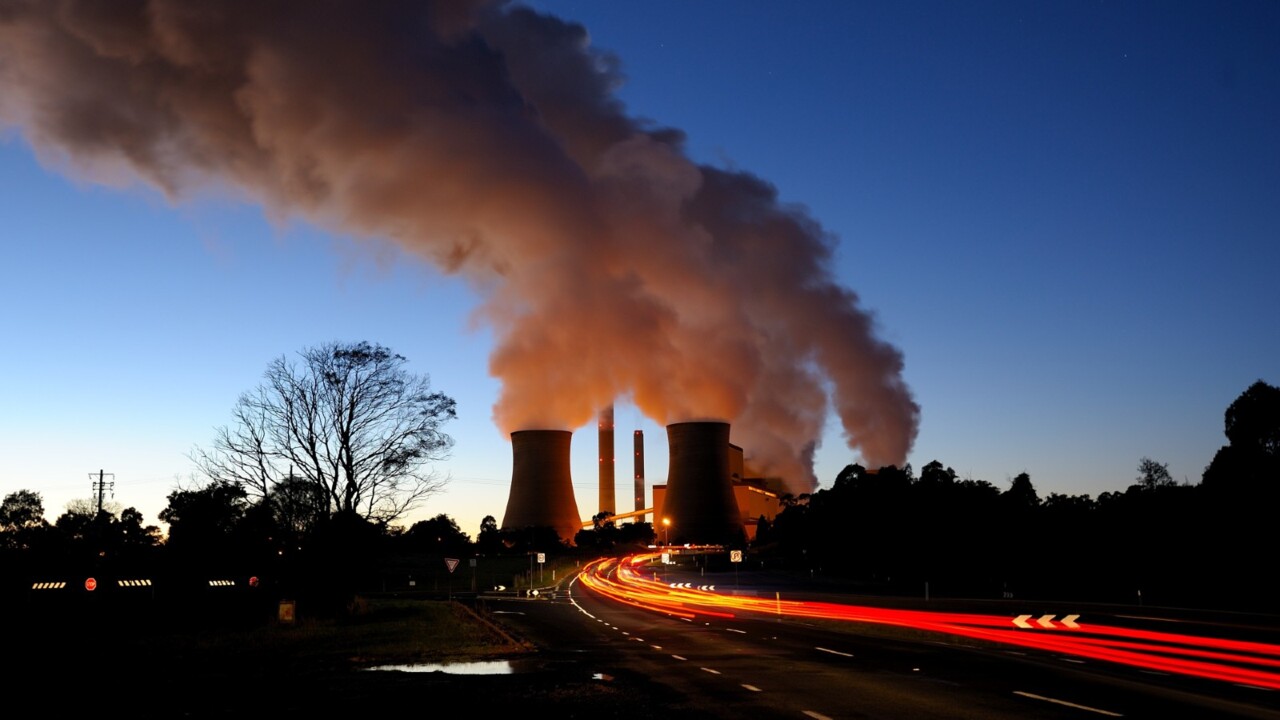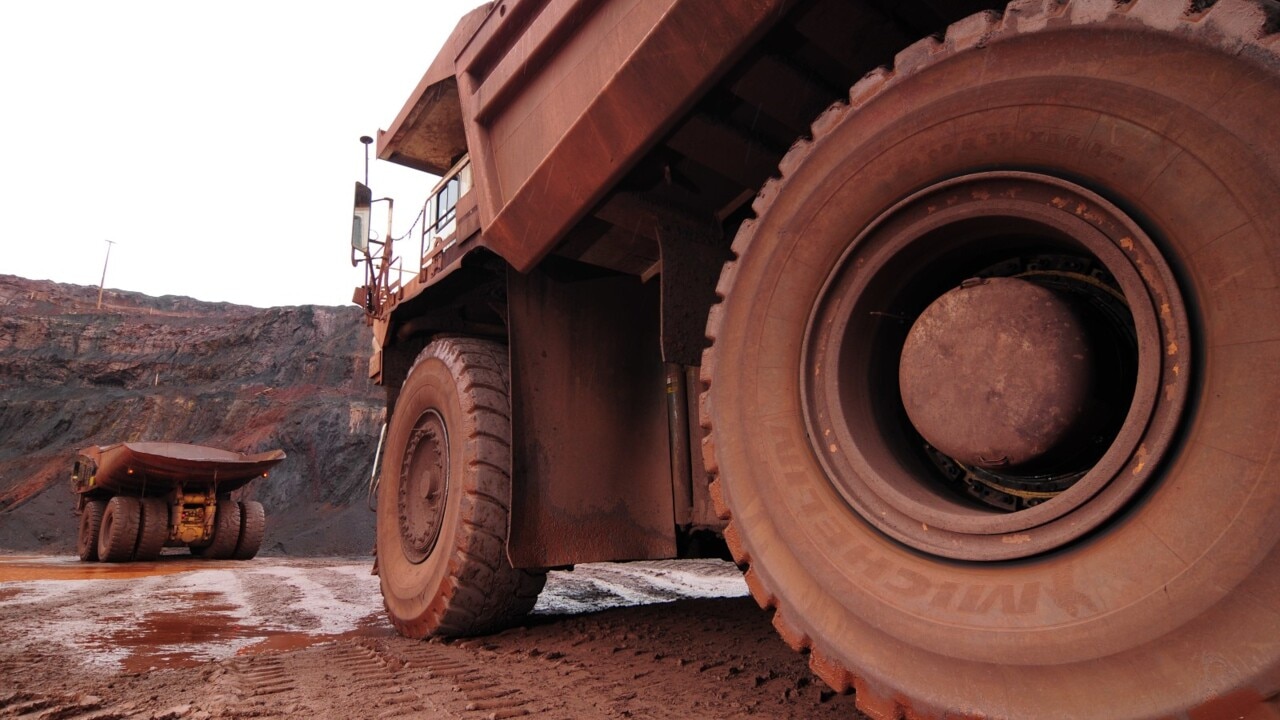BHP books $US12.9bn profit, declares US80c dividend
Chief executive Mike Henry on Tuesday hinted at more mergers and acquisitions as the mining giant booked a $US12.9bn net profit.

BHP boss Mike Henry has played down the prospect that cuts to Chinese steel production could send iron ore prices into free fall amid concern over an economic slowdown, saying prices were unlikely to fall below $US80 a tonne for any length of time.
Mr Henry was speaking after BHP cut its final dividend by more than half from last year’s record payouts on the back of a $US12.92bn annual profit – down 58 per cent on lower commodity prices and rising costs.
While the BHP boss conceded there remained some uncertainty around the shape of China’s economic recovery, he said BHP did not believe that talk that China’s central government could order steel production cuts would send iron ore prices tumbling below the medium-term lows of $US79 a tonne hit last year.
“There have been some reports of potential for mandated steel cuts later in the year – but the depth of the cut, or the longevity of that, we have no real sense for that yet,” he said.
“I would note that we‘re not starting from a position of high iron ore inventories in China or high steel inventories. So any mandated steel cuts would start quite quickly to eat into inventories that aren’t at particularly high levels.”
Mr Henry said that global inflation had also pushed up costs for most mining companies, helping put a floor on the iron ore price by raising the bar for marginal and swing producers of the steelmaking material.
In BHP’s annual market and commodity outlook chief economist Huw McKay fleshed out the company’s views saying it would be “disingenuous to hold a high conviction position” on whether Chinese authorities would order steep production cuts in the country’s steel sector.
“We anticipate a broadly balanced iron ore market on average across the 2023 calendar year, although there are multiple uncertainties feeding into that assessment, most notably the breadth, severity and timing of mandatory steel cuts in China,” Dr McKay said.
Beijing ordered steel industry curtailments in 2021 and 2022 to limit growth in the country’s steel output, but Dr McKay said on Tuesday BHP believes total Chinese output will grow about 2 per cent in 2023 – but that would still mean some curtailments in the second-half, given China’s steel mills produced at an annualised rate of 1.08 billion tonnes in the first half of 2023.
“To be flat versus calendar 2022, which was 1018 Mt, the run – rate would have to fall to 956 million tonnes in half two. We would categorise the latter scenario as a severe impost on the sector if it were to eventuate,” he said.
But whatever happens in the Chinese steel industry, BHP believes there will be “cost support” for a price cushion at between $US80 and $US100 a tonne, with marginal producers – in China, India and elsewhere – likely to quickly axe supply if prices fall sharply.
BHP booked an underlying net profit of $US13.4bn for the full financial year, with one-off items of $US411m dragging down its statutory result.
The result is down 58 per cent from last financial year’s record $US30.9bn profit, with its underlying results slightly above analyst expectations.
Consensus analyst expectations had tipped an underlying net profit of $US13.3bn, and underlying earnings before interest, tax, depreciation and amortisation of $US28.07bn.
The US80c a share final dividend is less than half of the $US1.75 final payout in 2022. Including BHP’s US90c interim dividend, the company will have returned $US1.70 for the full year.
Analyst consensus had expected a $US1.72 total payout for the financial year.
BHP said its final dividend was US13c above the company’s minimum 50 per cent dividend policy payout of 50 per cent of underlying attributable profit for each six month period.
Chief executive Mike Henry said the company’s results were a strong performance in a volatile year impacted by rising global inflation and lower commodity prices, with the BHP boss hinting at more corporate moves as BHP positions its portfolio for the future.
“Our balance sheet is robust and deliberately positioned to support portfolio growth in commodities the world needs for population growth, urbanisation and decarbonisation,” he said.
Mr Henry told The Australian the hangover from BHP’s disastrous forays into M&A markets in the last mining boom still loomed large in the company’s memory, and BHP would remain “super disciplined” when approaching acquisitions or takeovers.
“We worked ourselves into a real pickle through investing in the wrong opportunity at the wrong price. And so we have to be seen to be – as we demonstrated in the Noront Resources and then more recently with OZ Minerals – we have to be super disciplined,” he said.
“There are not that many opportunities that are going to arise where there‘s value that can be created for BHP shareholders. It has to be somewhere we can unlock material synergies, like OZ Minerals. Or it has to be great assets that for some reason are underpriced at a point in the cycle – but the issue with great assets is they don’t tend to be as cycle dependent as not so great assets.”
Mr Henry said BHP is unlikely to put any more of its existing operations on the sale block after the company closes a sale of its Daunia and Blackwater mines in Queensland, however, saying the rest of the company’s portfolio fits with its strategy of targeting minerals needed for global decarbonisation.
“Commodity demand has remained relatively robust in China and India even as developed world economies have slowed substantially. In the near term, China’s trajectory is contingent on the effectiveness of recent policy measures. We expect buoyant growth in India with strong construction activity underpinning an expansion in steelmaking capacity.”
BHPs flagship iron ore division booked underlying EBITDA of $US16.66bn, in line with consensus estimates of $US16.67bn. That is down from $US21.71bn the previous year.
BHP’s Pilbara mines shipped 285 million tonnes of iron ore for the full financial year, selling 281 million tonnes and building up 4 million tonnes in stockpiles at its Chinese port facilities.
The figure was matched by record output of 285 million tonnes from its mines, in the middle of its 278 to 290 million tonne guidance range. BHP said its operations would likely lift output in the current year, to 282 to 294 million tonnes.
BHP’s coking coal earnings plunged, however, on lower prices and a $US700m hit from the Queensland state government’s increased royalty rates. BHP’s BMA division booked underlying EBITDA of $US3.2bn, down from $US6.3bn the previous year.
BHP’s copper division booked underlying EBITDA of $US6.7bn, down 22 per cent for the year.
BHP shares closed 0.7 per cent, or 31c, lower at $43.21.
More Coverage





To join the conversation, please log in. Don't have an account? Register
Join the conversation, you are commenting as Logout